Huernia ‘Pink Eye’
Scientific name: Huernia sp. ‘Pink Eye’
Common names: Starfish Flowers, Carrion Flowers
Natural habitat: Huernia ‘Pink Eye’ is a cultivated hybrid, which means it does not have a specific natural habitat. However, its parent species are indigenous to the semi-arid regions of Eastern and Southern Africa, where they are adapted to arid environments with infrequent rain.
Flowers: The Huernia ‘Pink Eye’ features a captivating bloom with a diameter of approximately 1 inch (2.5 centimeters). The flower is a vibrant pink with a deep, dark pink to almost burgundy center, creating an eye-catching contrast.
Stems: The stems of Huernia ‘Pink Eye’ are fleshy and angular, boasting a light green hue with soft, pointed projections. These stems typically reach heights of about 2 to 3 inches (5 to 7.5 centimeters).
$5.50
Add a splash of color to your succulent display with the Huernia ‘Pink Eye’. This striking plant offers spectacular 1-inch (2.5-centimeter) pink flowers with a contrasting burgundy center, drawing the eye and inviting interest. The light green, spiky stems grow to a modest 2 to 3 inches (5 to 7.5 centimeters), making this plant a perfect fit for small spaces or as a desktop companion. With its ease of care and minimal water needs, the Huernia ‘Pink Eye’ is ideal for both novice and experienced plant enthusiasts.
We sell all Stapeliads as unrooted cuttings – a bunch of 3 stems each minimum 4 inches (10 cm).
General Care for Stapeliads
Stapeliads are a unique group of succulent plants known for their striking flowers and interesting forms. They belong to the Apocynaceae family and are mostly native to Africa, with some species found in Asia and the Middle East. Here’s a general guide to caring for Stapeliads:
- Lighting: Stapeliads thrive in bright, indirect light. Direct sunlight can be harmful, especially during the hottest parts of the day. A partially shaded spot is ideal.
- Watering: These plants require moderate watering. Allow the soil to completely dry out between waterings. Over-watering can lead to root rot, so it’s essential to ensure good drainage.
- Soil: Use a well-draining cactus or succulent mix. Stapeliads prefer a soil mix that allows for good air circulation around the roots.
- Temperature: Most Stapeliads prefer warm temperatures and are not tolerant of frost. Keep them in temperatures above 6-8°C (43-46°F).
- Humidity: Stapeliads generally do well in average room humidity. However, during the growing season, a slight increase in humidity can promote healthier growth.
- Fertilization: Feed sparingly during the growing season. Use a balanced, water-soluble fertilizer at half strength.
- Propagation: Propagation can be done through stem cuttings or seeds. Allow cuttings to dry before planting.
- Pests and Diseases: Watch out for pests like mealybugs and take precautions against snails and slugs. Stapeliads are generally resistant to diseases if well taken care of.
Specification: Huernia ‘Pink Eye’
| Weight | 0.55 lbs |
|---|



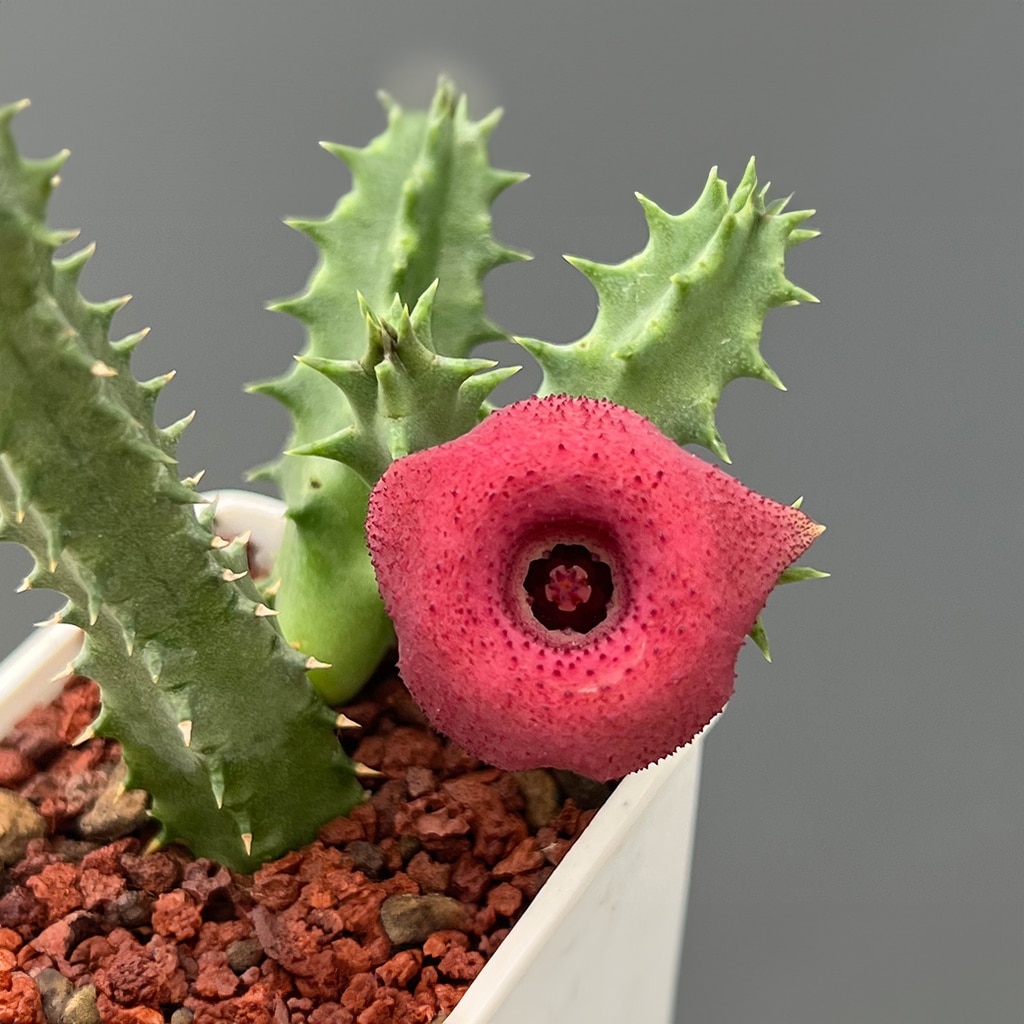
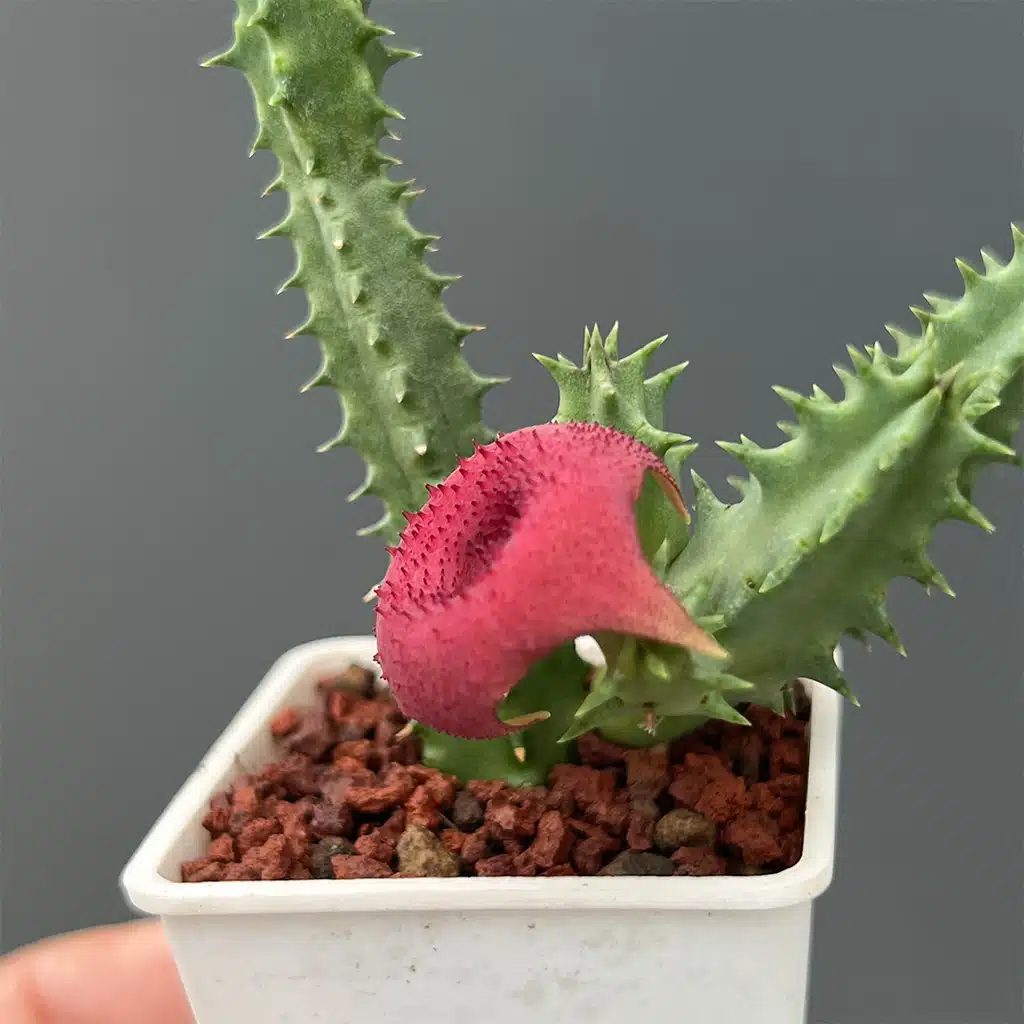



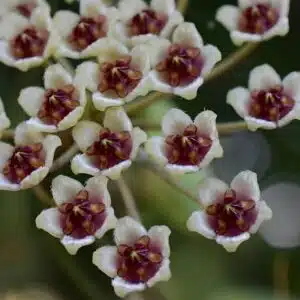

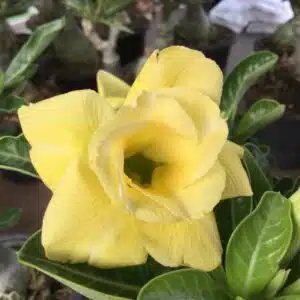
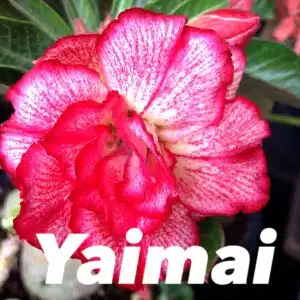
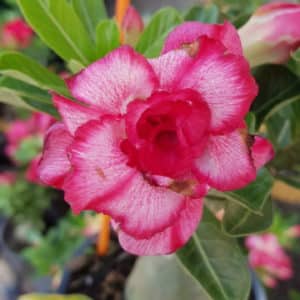

There are no reviews yet.